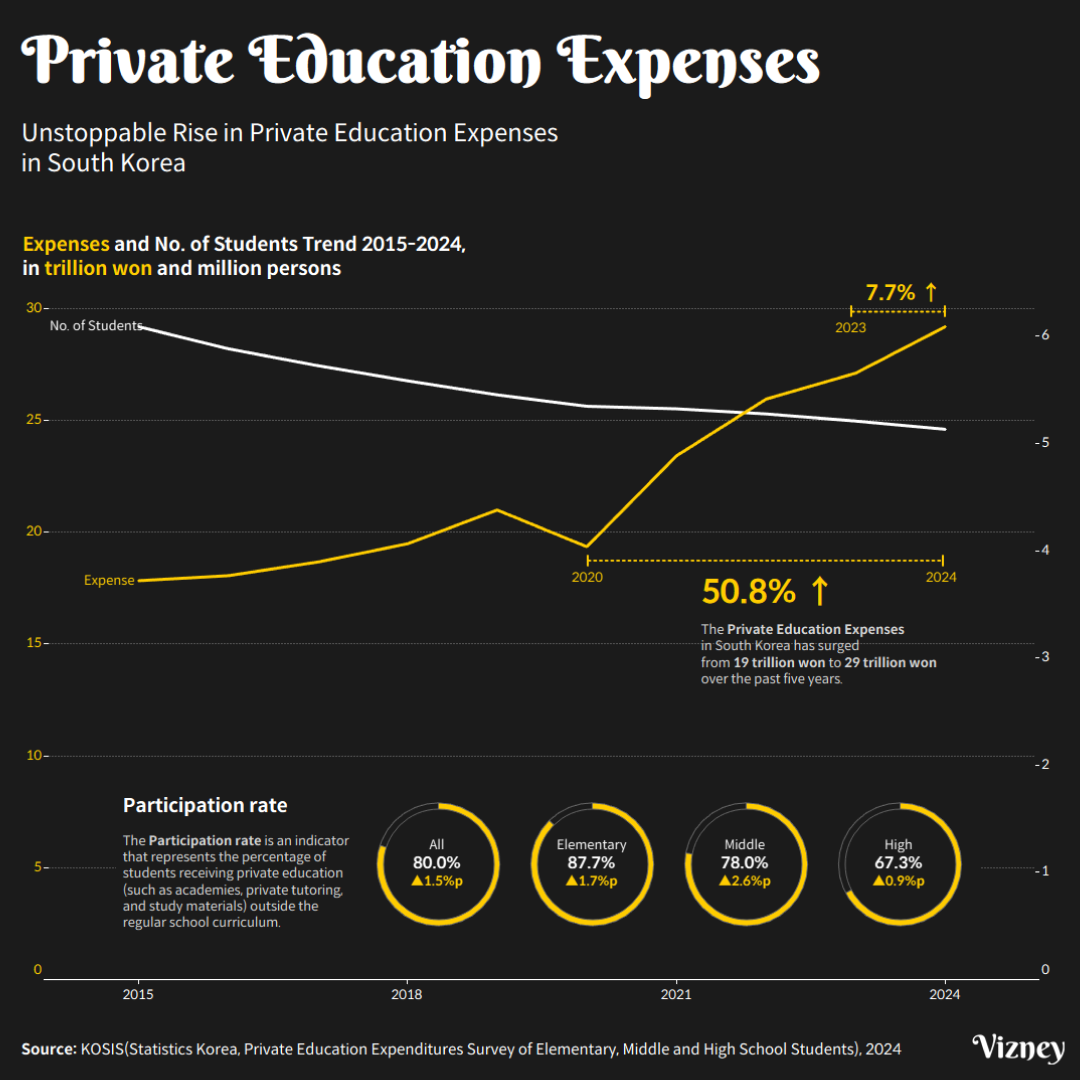Unstoppable Rise in Private Education Expenses in South Korea
Despite a declining student population, private education expenses in South Korea continue to rise. In 2024, total spending reached 29.2 trillion KRW, up 7.7% from the previous year. This growth highlights parents' increasing reliance on private education.

Rising Private Education Costs Amid Declining Student Numbers
As of 2024, the number of elementary, middle, and high school students in South Korea stands at 5.13 million, reflecting a decrease of 80,000 students from the previous year. However, private education spending has surged by 5.8 trillion KRW, increasing the financial burden on each student.
The growth rate of private education expenses by school level is as follows:
- Elementary school: 13.2 trillion KRW (+6.5%)
- Middle school: 7.8 trillion KRW (+9.5%)
- High school: 8.1 trillion KRW (+7.9%)
The primary factors driving this increase include intensified competition for entrance exams and increased parental investment in education. Notably, the highest growth rate is observed in middle schools, likely due to the expansion of early private education aimed at high school entrance preparation.
Rising Costs in Core Subjects and the Competition for Early Learning
The surge in private education expenses is concentrated in core subjects (Korean, English, and Mathematics). The cost increases by subject are:
- English: 141,000 KRW per month (+10.4%)
- Mathematics: 134,000 KRW per month (+10.0%)
- Korean: 42,000 KRW per month (+10.0%)
- Social Studies/Science: 20,000 KRW per month (+5.4%)
The normalization of early learning has accelerated private education costs. The monthly private education cost per elementary student increased by 11.1%, the highest among all school levels. This trend suggests that parents are investing in private education at an earlier stage due to concerns that delayed learning may put their children at a disadvantage. Consequently, the financial burden of private education is rising across households.
Increasing Competition and Private Education Participation Rates
Private education participation rates have continued to climb, with 80.0% of students receiving private education in 2024. The participation rates by school level are:
- Elementary school: 87.7% (+1.7 percentage points)
- Middle school: 78.0% (+2.6 percentage points)
- High school: 67.3% (+0.9 percentage points)
The sharp rise in elementary school participation rates is particularly noteworthy, reflecting the growing trend of early private education. This indicates that parents are increasingly enrolling their children in private education early to prepare for future academic competition.
Moreover, private education participation and spending are positively correlated with academic performance. Students in the top 10% academically spend an average of 665,000 KRW per month, whereas students in the bottom 20% spend 370,000 KRW. This suggests that private education contributes to widening educational disparities.
Growing Financial Burden and the Need to Reduce Dependence on Private Education
The persistent rise in private education spending, despite a declining student population, stems from parental concerns that public education alone is insufficient for academic success. As private education costs place a greater strain on household finances, the educational gap between income groups is also widening.
To address this issue, it is crucial to enhance the quality of public education and implement policies that reduce dependence on private education. Rather than focusing solely on strengthening public education, policymakers must develop comprehensive support systems that allow students to achieve academic success without excessive reliance on private education.

